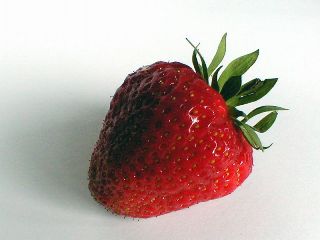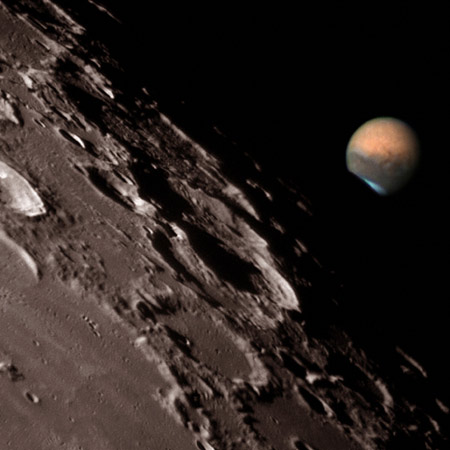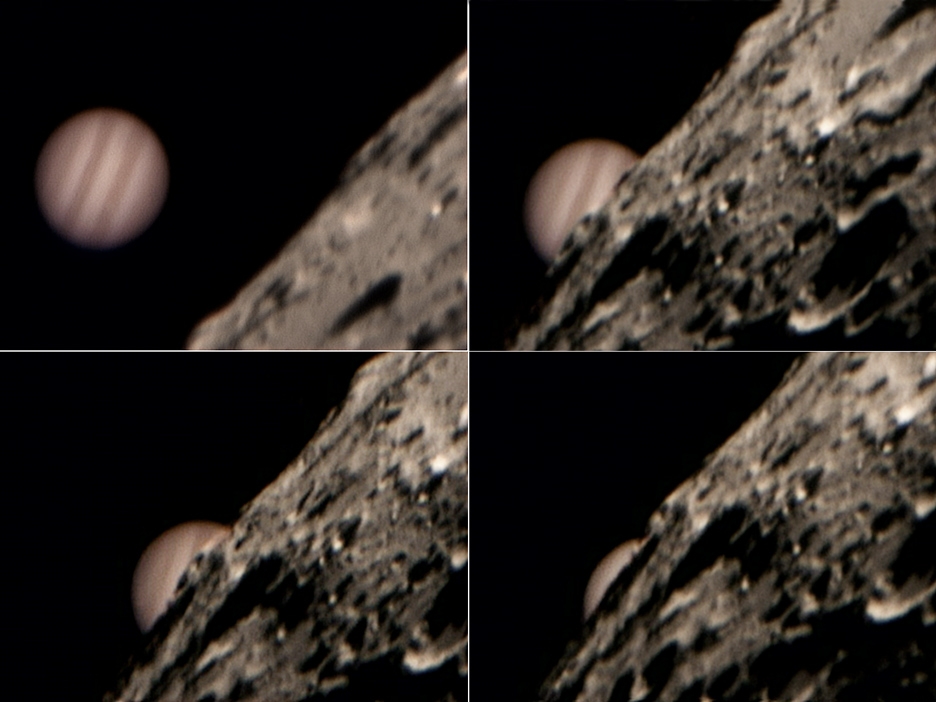 Ah, the Majesty of Nature!
Ah, the Majesty of Nature!I just saw two sets of incredible photos from Bad Astronomy. I'll share it with you guys here.
The first set of photos show the Moon occulting three outer planets - Mars, Jupiter and Saturn. These are three separate, very rare events. Occultations can have scientific uses, but for the casual observer these are interesting because you have two celestial bodies that appear close together and can then compare their apparent sizes directly in a single photo. Phil put up the Mars photo to emphasize his point that Mars can never appear to be as large as the Moon does from Earth.
I would also like to use these photos to illustrate just how far away the planets are. Although some of them may be gas giants, their immense distances make their gravitational influence (inverse square law!) on the Earth very small. No matter what kind of special alignment happens, their total gravitational influence can never come close to the Moon or the Sun.
So ignore any email about planets aligning in a straight line and causing some kind of catastrophe on Earth. Because it can't happen.

Here's Mars with its (south?) polar ice cap slightly obscured by the Moon.

Jupiter, with two equatorial cloud bands that are easily visible in the smallest (60mm) telescopes. Note how oval the planet looks; gas giants tend to look fat around their equators.

And Saturn, what a gem of a planet! Always a delight to see in small telescopes. The rings start to become visible at about 30X and become more distinct with increasing power. Remember that for telescopes, useful magnification depends on aperture. The guideline for maximum useful magnification is [2 X aperture(mm)]. A 60mm telescope gives you 120X magnification at best. Any higher and you're just turning a small blur into a big blur.
The second set of photos is impressive in an entirely different *cough* way.

Guess why this bicycle looks like its covered in some silky stuff?

Because of this teeming mass of caterpillars. Click on the above pictures for even more gory photos. If you can read Swedish, please tell me what is going on with these crazy bugs.
Oh sorry, were you eating?






2 Comments:
Well I don't read Swedish, but I do know of these critters. They are tent caterpillars, I don't know what species, and they are extremely voracious. The best method I know for killing them is fire.
I think you're right.
Here is a website on tent caterpillars -
http://www.tent-caterpillar.com/
And here's a page with more icky pictures of a teeming mass of them -
http://www.hiltonpond.org/ThisWeek010329.html
Erk.
Post a Comment